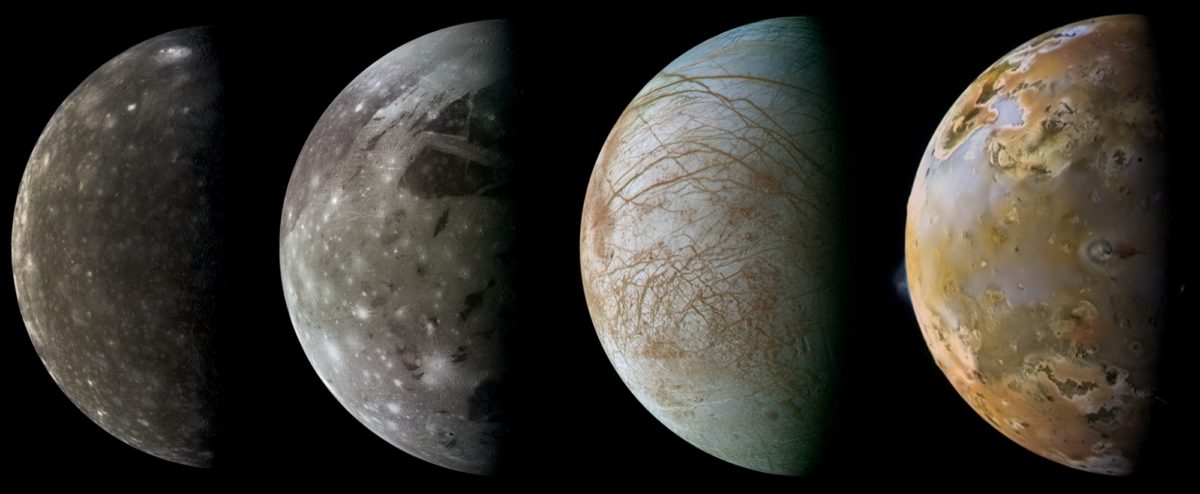Emily Lakdawalla • Apr 02, 2018
Moon Monday: Galileo's Galileans
Happy Moon Monday! This week I am hosting the rotationally curated @astrotweeps account on Twitter, and I'm talking a lot about space imaging and sharing it with the public. I'm featuring our terrific image library, and especially our library of amateur-processed space images. And I'm talking about how it was Galileo's (the spacecraft, not the scientist) images of the Galilean moons that were instrumental in nudging me toward planetary science, so it seems fitting to feature a portrait of the Galilean moons by Galileo.

Jupiter has four of the seven largest moons in the solar system, and each one is utterly unique. (The other three great moons are Titan, Triton, and our own Moon.) If they were planets, we'd send individual space missions to them (well, maybe not poor Callisto). But because they exist in Jupiter's shadow -- not to mention Jupiter's magnetic field -- they haven't yet received that honor. That'll change in a couple of decades, when NASA's Europa Clipper and ESA's JUICE arrive to study Europa and Ganymede, respectively.
I was a middle school science teacher in 1997 when I first saw the images of Io and Ganymede from Galileo's 9th Jupiter orbit. I was a geologist by training, and I saw in these moons a festival of cross-cutting relations, a playground for a curious person interested in telling the story of these worlds' geologic histories. I never got to work on the Galilean moons as a scientist, but my officemates did, and I got to work on pictures I'd never even seen, taken by a spacecraft named Magellan at Venus.
These portraits of half-phase Galilean moons are all from Galileo, taken on different orbits and were processed by Ted Stryk. Note how he selected images taken at nearly the same phase to make them sit together in a unified composition. He has sized them all to the same diameter to emphasize the "world"-ness of each of these satellites. He could also have chosen to represent them at their correct relative sizes, which would have presented them as a family of moons. It's a subjective choice, part of the fun of being an image processing artist.
The Time is Now.
As a Planetary Defender, you’re part of our mission to decrease the risk of Earth being hit by an asteroid or comet.
Donate Today

 Explore Worlds
Explore Worlds Find Life
Find Life Defend Earth
Defend Earth

